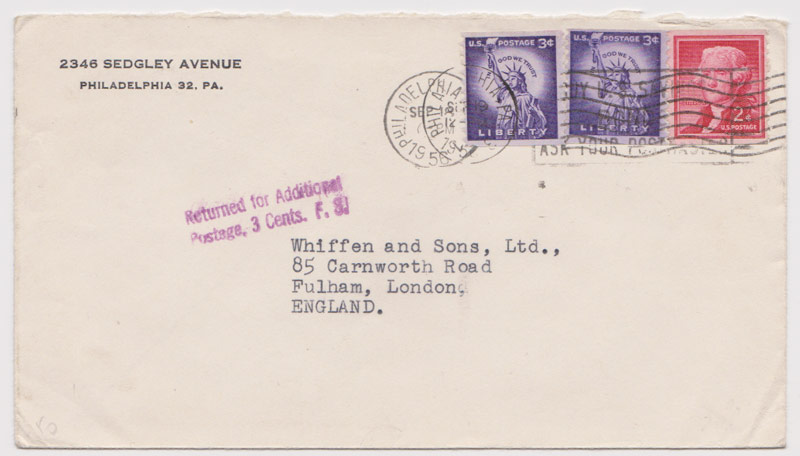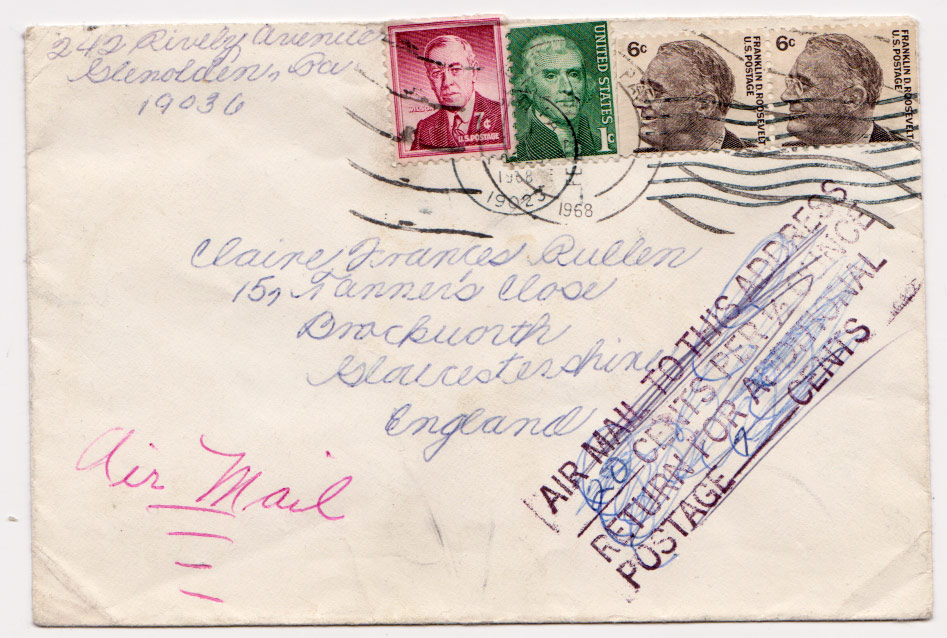
Here are a couple of interesting variants on the more traditionally collected area of postage due mail.
Return to sender for additional postage
The two covers shown below, dating some 12 years apart stem from the options made available to the USPS staff regarding how they treat under franked mail. Normally when items are sent underpaid the recipient pays the extra plus a surcharge, however, the USPS did and presumably still does allow the item to be returned to the sender so they can add the correct amount.
The relevant part of the USPS manual showing the options available under section P011 can be found here.
This was of course only possible where a return address was included and was not always actioned as such. Thus they are a bit less common than the more traditional postage due covers.
Covers such as the two shown are an interesting addition to any modern postal history collection. There is a multitude of different markings and handstamp colours to look out for and an interesting and valuable reference collection could be built with some effort. These covers are not well researched or documented so often can be bought quite cheap.
1956 Cover to England

The one above originally had a 5c franking and has a nice clear two-line instructional HS in purple. This was probably business to business communication given the franking is all coil stamps.
1968 Airmail Cover

The one above is a little more unusual as it’s not instantly clear if it was sent surface or Airmail. However, the postal operative must have assumed was and returned it to get the additional 7 cents. It looks like the manuscript Airmail instruction was added then too!
We hope you found this interesting and if you have any examples in your collection please send us a picture as we are trying to build up more details about them.
While you are here why not check out our other postal history articles.